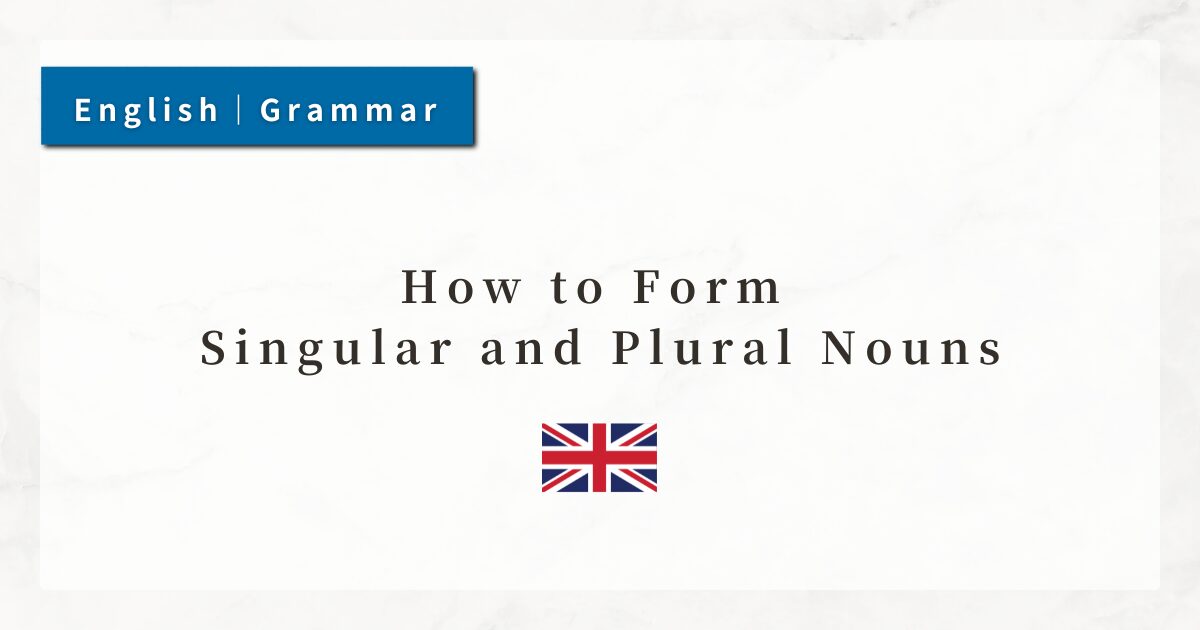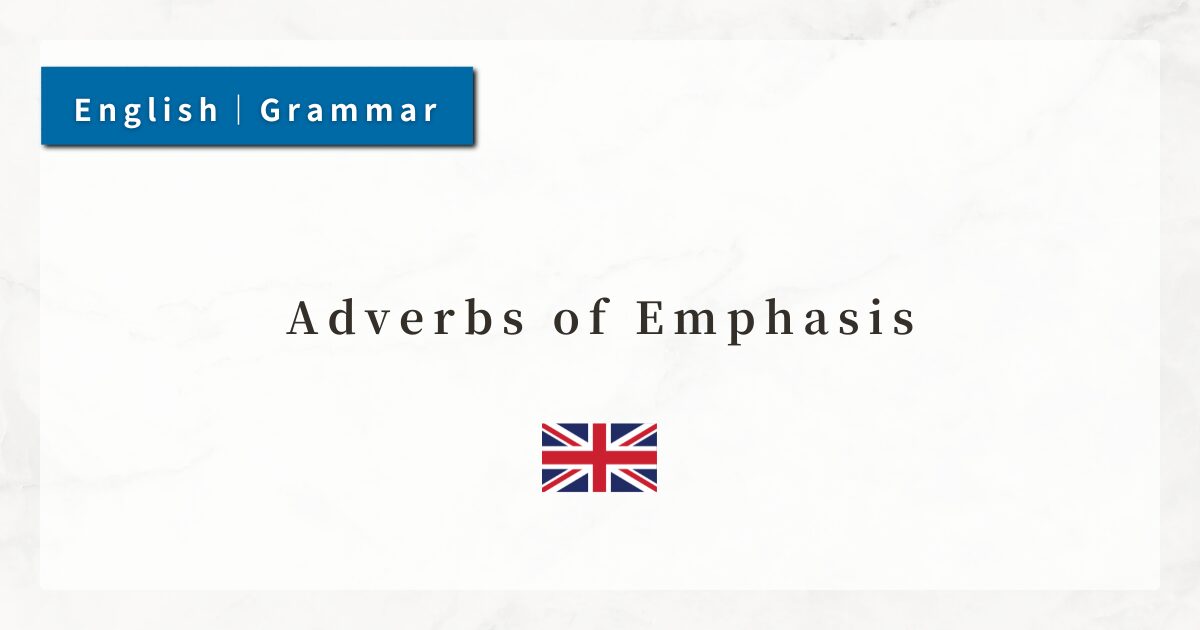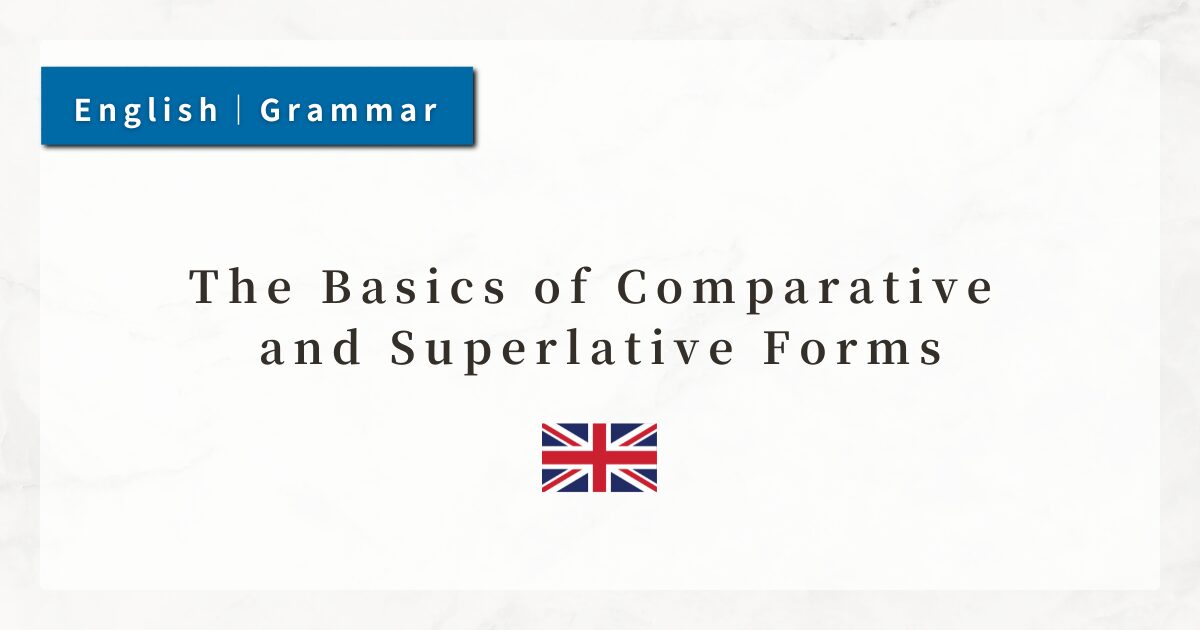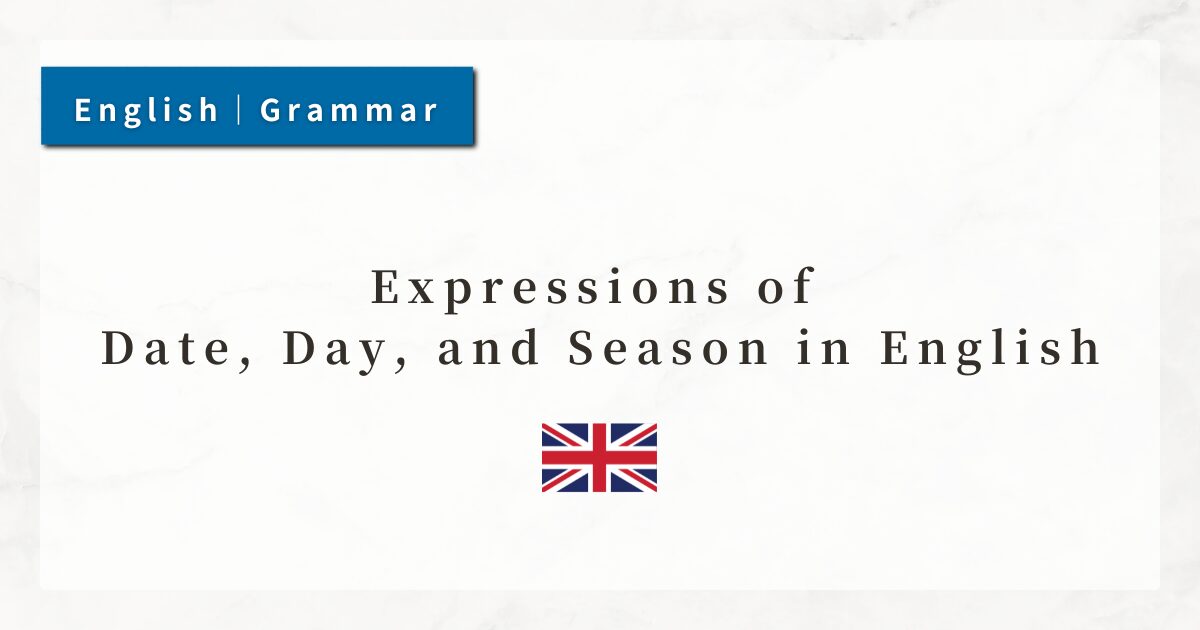#9 How to Form Singular and Plural Nouns|Regular and Irregular Patterns

In English, when distinguishing between “one item” and “two or more items,” nouns themselves change their form.
By correctly understanding and applying these changes, I can accurately convey numerical information, which significantly improves the precision of my reading, writing, and conversation in English.
In this lesson, I will explain the basic rules of plural forms in English nouns, their exceptions, and how they are used in sentences.
1. Basics of Singular and Plural Nouns
1-1. The Fundamental Difference Between Singular and Plural
- Singular form: one item/person
→ a book, one apple - Plural form: two or more items/people
→ two books, five apples
English nouns have a singular form (for one) and a plural form (for two or more).
The basic rule is to add -s or -es to the end of the word, but depending on the final letter, the form may change, and some words have irregular plural forms.
1-2. Main Patterns of Plural Formation
| Singular | Plural | Rule/Explanation |
|---|---|---|
| book | books | Most common nouns simply add -s to form the plural, regardless of whether the final letter is a vowel or consonant. |
| bus | buses | Nouns ending in -s, -sh, -ch, -x, -z take -es to make pronunciation smoother. |
| baby | babies | For words ending in consonant + y, change y to i and add -es. Note the spelling change. |
| toy | toys | For words ending in vowel + y, simply add -s. Compare with baby. |
| knife | knives | Many nouns ending in -f, -fe change to -ves. However, there are exceptions. |
| man | men | Irregular change: both spelling and pronunciation change, so they must be memorized. |
| sheep | sheep | “Invariant” nouns: singular and plural forms are the same. The meaning is determined by context. |
Since there are many exceptions in plural formation, it is also important to memorize each word individually.
2. Specific Rules for Plural Forms
2-1. The Basic Rule: Adding “-s”
This is the most frequently used and fundamental rule.
- dog → dogs
- book → books
Be aware of pronunciation differences, such as cats (/s/) and dogs (/z/). Both are grammatically correct plural forms, but the sound differs.
2-2. Adding “-es” for Easier Pronunciation
Words ending in -s, -sh, -ch, -x, -z require -es, since simply adding -s makes pronunciation difficult.
- bus → buses
- box → boxes
- watch → watches
2-3. Special Changes for Words Ending in -y
- For consonant + y: change y to i and add -ies.
Examples: city → cities, baby → babies - For vowel + y: simply add -s.
Examples: boy → boys, toy → toys
2-4. Nouns Ending in -f / -fe (With Exceptions)
Some nouns ending in -f / -fe change to –ves.
- knife → knives
- leaf → leaves
However, there are exceptions:
- roof → roofs
- belief → beliefs
These are conventional forms, so it is more efficient to learn commonly used words first.
2-5. Irregular Plural Nouns
These words undergo major changes in both spelling and pronunciation, and must be memorized.
- man → men
- woman → women
- child → children
- tooth → teeth
- foot → feet
Irregular plurals appear frequently in both conversation and writing, so I should become familiar with them early.
2-6. Invariant Nouns (Same in Singular and Plural)
Some nouns have the same form in both singular and plural, such as sheep, deer, fish.
- One sheep is eating grass.
- Ten sheep are eating grass.
In these cases, I must determine singular or plural based on numbers and verbs in the sentence.
3. Summary
- In English, nouns change form depending on number.
- The basic plural rule is to add -s.
- Depending on the ending, changes such as -es / -ies / -ves are required.
- For nouns ending in consonant + y, change y to i + -es. For vowel + y, simply add -s.
- Irregular plurals must be memorized, starting with frequently used words.
- Some nouns (sheep, fish, deer) have the same form in both singular and plural, so context is key.
- When a number is present, the noun must be in plural form. (three cats)




